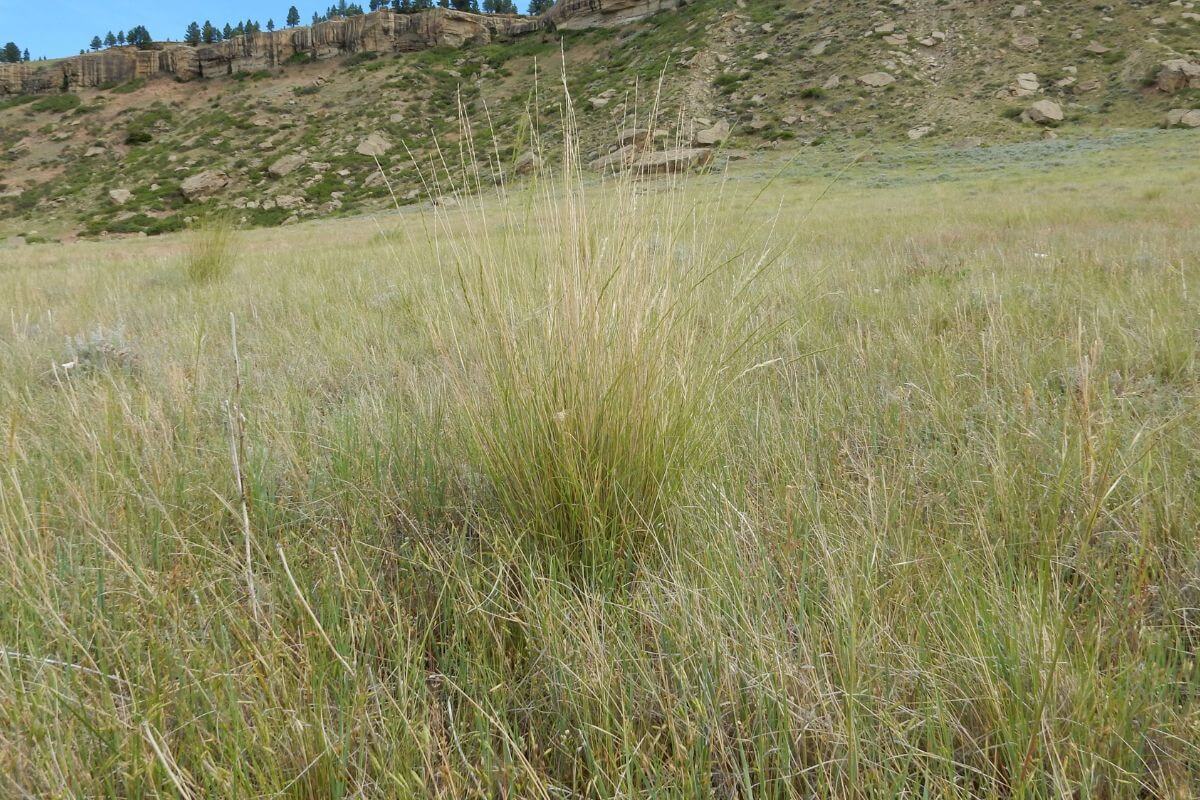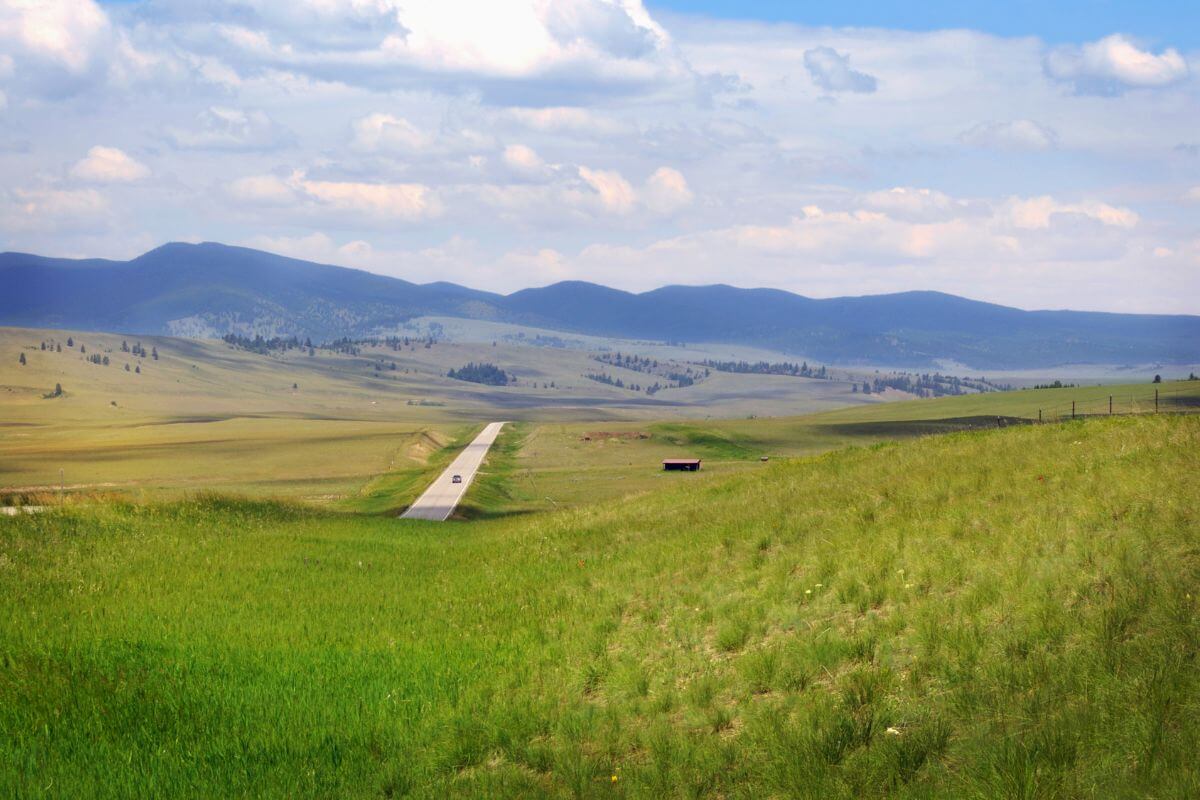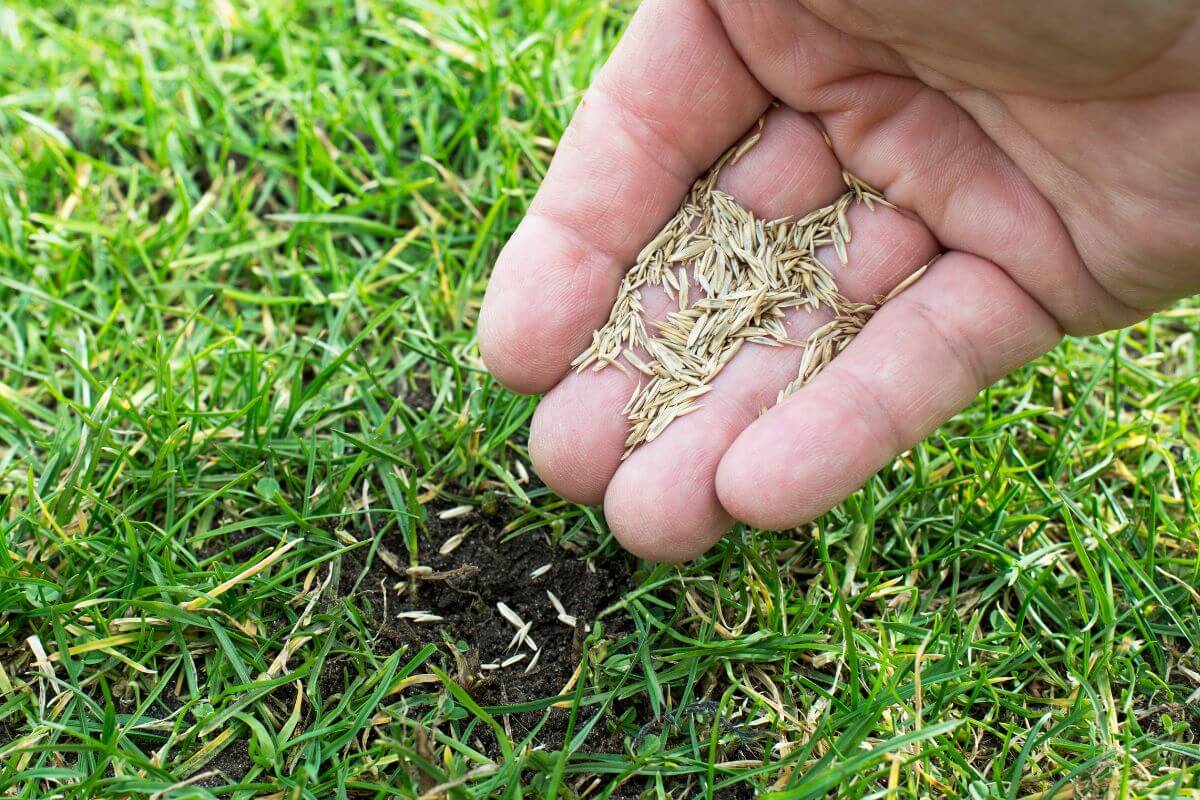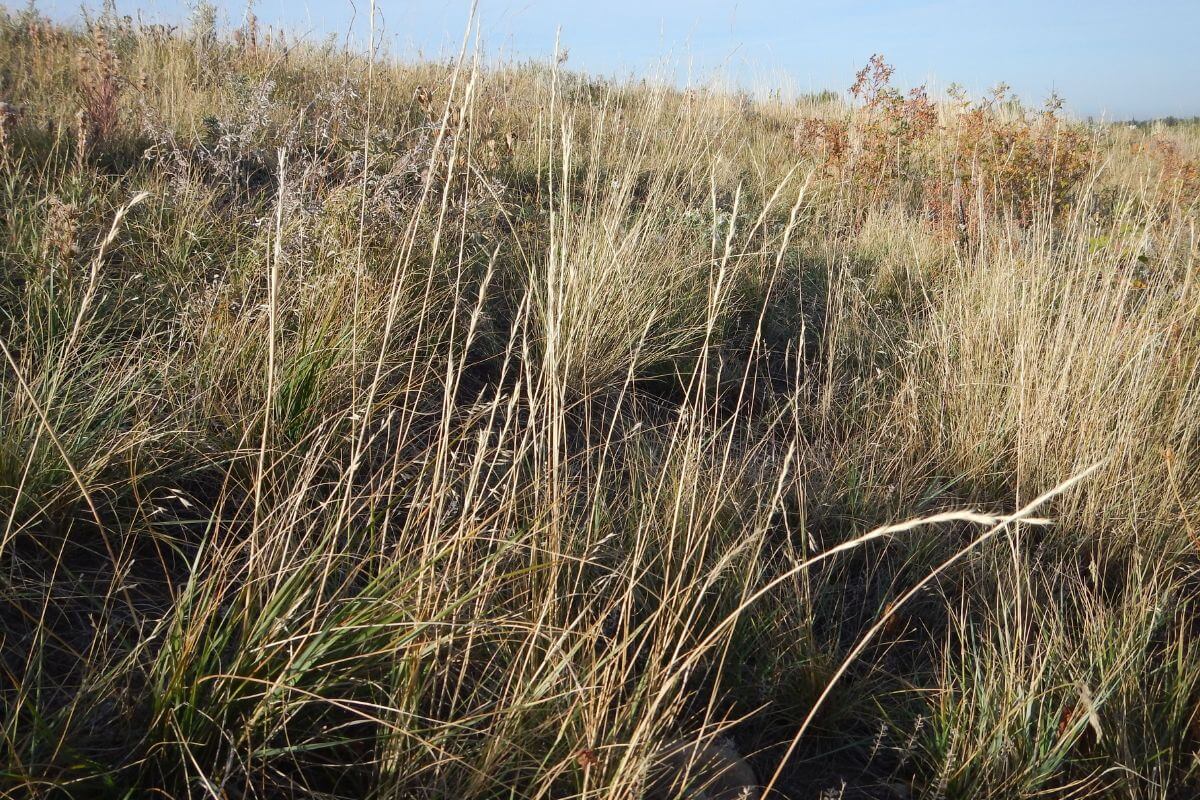Hey there, nature enthusiasts and wanderlusters!
Today, I want to take you on a captivating journey through the breathtaking landscapes of Montana, where the beauty of the land meets the resilience of its native flora.
And what better symbol to represent this mesmerizing state than the official state grass itself, bluebunch wheatgrass?
- Related article: Montana’s State Emblems
In this article, you’ll get an exclusive peek into the world of bluebunch wheatgrass, unraveling its fascinating characteristics and uncovering the invaluable role it plays in Montana’s ecosystem.
Now, let me assure you that you’re in expert hands. As a passionate nature enthusiast and devoted researcher, I have delved deep into the wonders of the bluebunch wheatgrass for years.
Whether you’re a local Montanan looking to learn more about your state’s cherished symbol or a curious traveler seeking to uncover the hidden treasures of Montana’s landscapes, this article is crafted especially for you.
Montana State Grass Origins

Montana is a place that perfectly encapsulates the natural wonders of the world, especially with its official state grass, the bluebunch wheatgrass, or Pseudoroegneria spicata.
In the spring of 1972, a group of individuals from Havre came together under the banner of FORUM, a community development organization supported by the local Chamber of Commerce and Hill Country Extension Service.
Their mission was simple: to champion the cause of honoring Montana’s natural heritage by designating an official grass for the state. And thus, the seed of bluebunch wheatgrass was sown.
In 1973, during the 43rd Legislature, Senator David James finally passed Senate Bill 41 which acknowledged the bluebunch wheatgrass as Montana’s state grass.
This bill recognized the beauty, resilience, and ecological importance of this remarkable grass, ensuring that it would forever hold a special place in the hearts and minds of Montanans.
And let’s not forget the tireless efforts of Mrs. Toni Hagener, who played a crucial role in bringing bluebunch wheatgrass to the forefront of Montana’s symbols.
Through her dedication and passion, she helped shine a light on the delicate contrasts in heritage that make Montana such a unique and captivating place.
What Is a Bluebunch Wheatgrass?

The bluebunch wheatgrass is the proud official state grass of Montana. Let me take you on a journey to discover the physical characteristics of this remarkable grass.
Native to the wide-open spaces of The Treasure State, bluebunch wheatgrass, scientifically known as Pseudoroegneria spicata, is truly a sight to behold.
With its slender spikes reaching for the sky, bluebunch wheatgrass stands tall and proud, showcasing its adaptability to a variety of ecological niches.
The bluebunch wheatgrass often stands 1.5 to 4 feet tall on average, often with short rhizomes. It also has seed spikes that are 3 to 8 inches long.
This plant’s growth begins in April and stays green well into the summer as regrowth occurs following fall rains.
It reproduces from seeds, tillers, and rarely through rhizomes. Its life can span several years, providing a source of sustenance for both livestock and wildlife alike.
The growth rate of this noble grass varies, but its resilience in the face of harsh conditions is truly remarkable.
The leaves of bluebunch wheatgrass are long and slender and usually numerous. They are lax, cauline, flat to in-rolled, commonly 4-6 mm wide, and green to blue in color.
And who can forget its iconic seedhead, a crown of delicate seeds that grace the landscape with their presence, announcing the arrival of a new generation?
But bluebunch wheatgrass is more than just a pretty face. Its widespread distribution throughout Montana has made it an integral part of the state’s ranching industry.
Cattlemen rely on this mighty grass as a valuable grazing source for their livestock, ensuring healthy and thriving herds. It is also useful in preventing soil erosion, stabilizing slopes, and holding landscapes in place.
- Related: Montana Plant Guide
Where Can You Find Bluebunch Wheatgrass?

Where can you find bluebunch wheatgrass? This remarkable grass thrives in cool-season locations and is common to the northern Great Plains and the Intermountain regions of the western United States.
From mountain slopes to benches, basins to alluvial fans, and valley bottoms, bluebunch wheatgrass has adapted to a variety of ecological niches.
When it comes to soil preferences, this resilient grass can be found in well-drained, medium to coarse-textured soils.
However, it’s not limited to just that. The Bluebunch wheatgrass has also been known to thrive on clayey sites, proving its adaptability in various soil conditions. It doesn’t shy away from thin, rocky sites either, or from steep slopes.
What’s truly incredible about bluebunch wheatgrass is its ability to endure different saline conditions. But while it can tolerate weakly saline soils, it truly flourishes in dry environments the best.
Even in small quantities on moist, fine-textured soils, this grass manages to make its presence known.
So, whether you find yourself exploring the mountain slopes or wandering through the valley bottoms of Montana, keep an eye out for the majestic bluebunch wheatgrass.
Its tenacity and adaptability truly make it a native symbol of the wild beauty that the state has to offer.
One quick note, when looking for the bluebunch wheatgrass, be careful of Montana’s thorny plants which you might come across when walking on grasslands or on mountain slopes.
Bluebunch Wheatgrass Care

When it comes to caring for bluebunch wheatgrass, understanding its seeding process is crucial.
Here are some tips to ensure that your bluebunch wheatgrass is able to thrive:
- Precise Seeding Depth – The bluebunch wheatgrass should be seeded with a drill at a depth of 0.5 inches or less on medium-textured soils, 0.25 inches on fine-textured soils, and 0.75 inches or less on coarse-textured soils.
- Weed-Free Seedbed – A weed-free seedbed is also key to this grass’ growth.
- Ideal Growth Season and Soil Conditions – This wheatgrass grows particularly well during early spring on heavy to medium-textured soils and in late fall on medium to light-textured soils.
- Uninterrupted Growth – Provide your wheatgrass with 2-3 years of uninterrupted growth. This gives the grass the opportunity to establish a robust root system and thrive in its environment.
- 40% Utilization – During the plant’s rapid growth phase, it’s advised to limit utilization to no more than 40%. This allows the grass to grow and flourish without being overgrazed.
- 60% Utilization – Utilization can be increased to 60% after the rapid growth phase has passed.
- Deferred Rotation Grazing – The use of deferred rotation grazing is recommended for this grass. Spring grazing should only occur once every 3 years, giving the grass time to recover and ensuring its long-term sustainability.
By following these care guidelines, you can ensure the health and vitality of your bluebunch wheatgrass, allowing it to thrive and contribute to the beauty and conservation of Montana’s landscapes.
Bluebunch Wheatgrass Fun Fact

Here’s an interesting fact about bluebunch wheatgrass: Did you know that it’s not only the official grass of Montana, but it’s also the state grass of Washington?
Yes, this captivating plant holds the distinction of being the chosen grass for not just 1, but 2 states!
Bluebunch wheatgrass, also known as Pseudoroegneria spicata, is a unique feature of the landscape in these 2 regions.
Its captivating blue-green color and slender spike-like seed heads make it a visually engaging addition to any natural setting.
Montana State Grass Final Thoughts

The Montana State Grass, bluebunch wheatgrass, holds great significance not only for its striking appearance but also for its remarkable ability to thrive in challenging environments.
As the official grass of the state, this unique species has been recognized for its adaptability to various terrains and its capacity to withstand dry conditions.
Its deep root system allows it to access water from deeper in the soil, making it well-suited for regions with limited precipitation.
The bluebunch wheatgrass’s captivating blue-green hue and slender spike-like seed heads make it a visually engaging addition to any landscape.
Furthermore, its low-maintenance and moderate-maintenance characteristics make it an effective choice for community development and maintaining healthy grass growth.
This grass is a testament to the state’s physical endowment and its strong ties to the ranching industry.
Whether used for its aesthetically pleasing qualities or its practical applications, the bluebunch wheatgrass continues to contribute to the beauty and resilience of Montana’s natural landscape.
Montana State Grass FAQs
1. What Is Bluebunch Wheatgrass Used For?
The bluebunch wheatgrass can be found thriving in a variety of habitats, making it a versatile grass species for both livestock and wildlife.
It’s used for native hay production (prime choice for grazing use) and plays a crucial role in erosion control and reclamation projects. Its drought-tolerant nature makes it a top choice for stabilizing slopes and restoring damaged landscapes.
2. How Big Does Blue Bunch Wheatgrass Get?
The bluebunch wheatgrass can grow anywhere between 1.5 to 4 feet tall. Additionally, their seed spikes can stretch out to an impressive 3 to 8 inches long, adding a touch of elegance to this already enchanting grass.
3. What Is the Scientific Name for Bluebunch Wheatgrass?
The scientific name for bluebunch wheatgrass is Pseudoroegneria spicata.
4. Is Wheat and Wheatgrass the Same Thing?
Wheat is a crop that falls under the vast and mighty grass family. It’s what we use to make our beloved bread, pasta, and all those other carb-delicious goodies.
But wheatgrass? It’s the sprout, the very first young leaves that shoot up from the wheat plant. It’s like the baby of the wheat family, bursting with life and vitality.
They also vary in gluten content as wheatgrass is generally gluten-free while wheat is packed with gluten.
5. Can You Eat Wheatgrass Seeds?
Can you actually eat wheatgrass seeds? Well, my friend, the answer is yes, but with a few important caveats.
Experts recommend soaking the seeds for about 2-3 days before consuming them to allow bacteria to begin fermenting the seed, making it more digestible for our mighty digestive systems.
Find out more about the lovely state of Montana but giving these other great articles a read:
- Montana’s State Fruit
- Montana’s Official Fossil Find
- Montana’s Butterfly Emblem
- Montana’s Bedtime Melody
- https://plants.usda.gov/DocumentLibrary/plantguide/pdf/pg_pssps.pdf
- https://fieldguide.mt.gov/speciesDetail.aspx?elcode=PMPOA82010
- https://www.fs.usda.gov/rm/pubs_other/rmrs_2010_ogle_d001.pdf
- https://extension.usu.edu/rangeplants/grasses-and-grasslikes/bluebunch-wheatgrass
- https://blogs.oregonstate.edu/geo599spatialstatistics/2016/03/28/1587/
- https://commons.wikimedia.org/wiki/File:Pseudoroegneria_spicata
- https://commons.wikimedia.org/wiki/File:Agropyron_spicatum_-bluebunch_wheatgrass
- https://commons.wikimedia.org/wiki/File:Pseudoroegneria_spicata
- https://commons.wikimedia.org/wiki/File:Elymus_albicans

